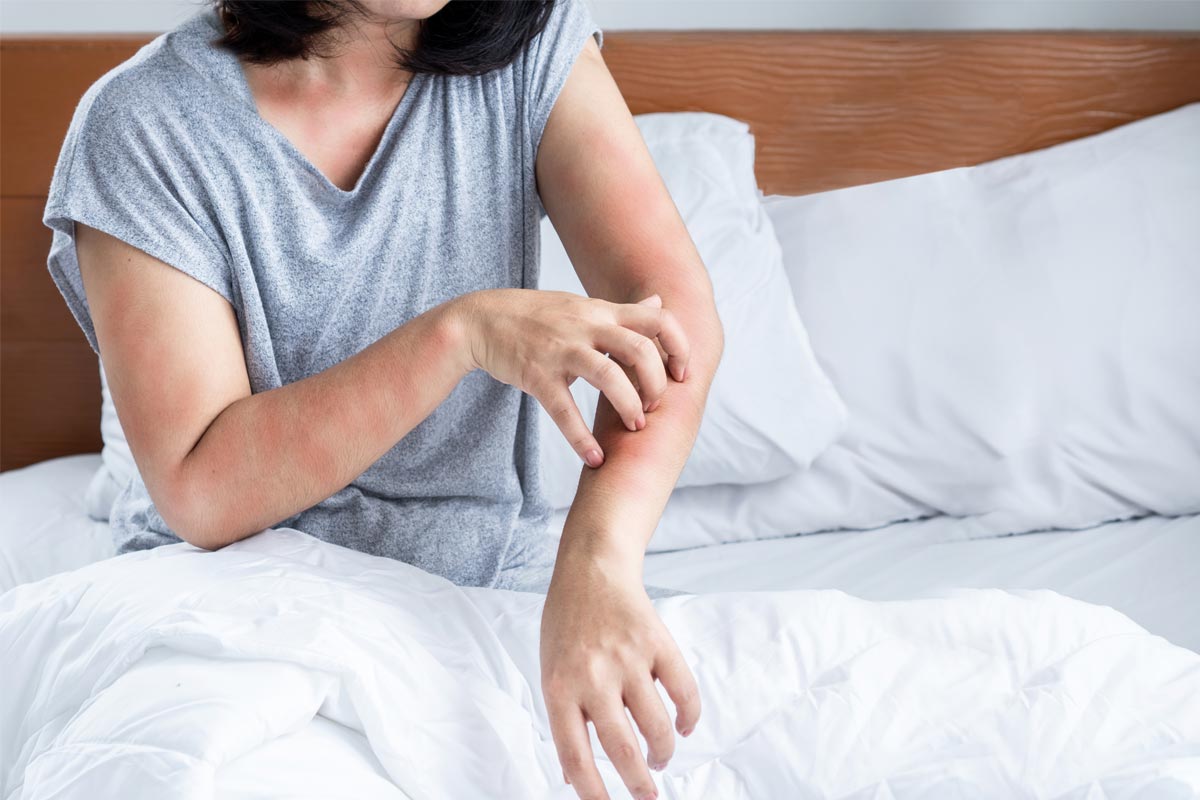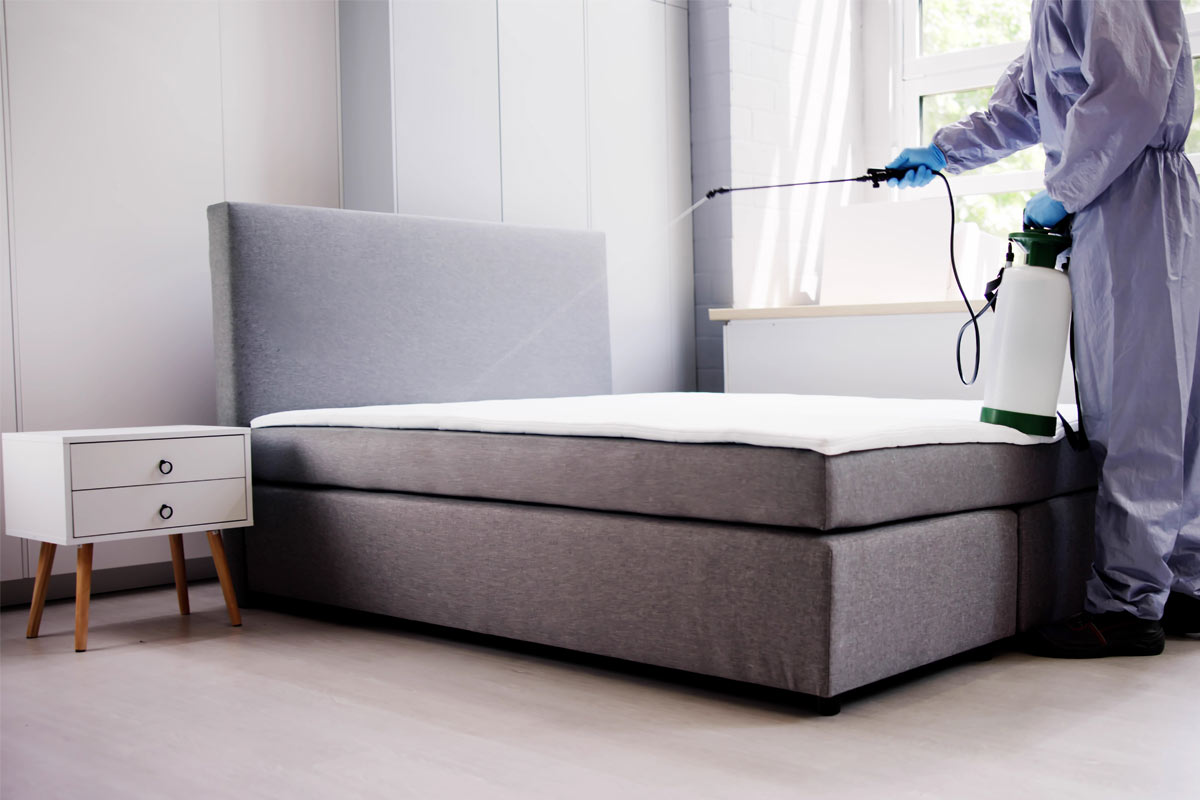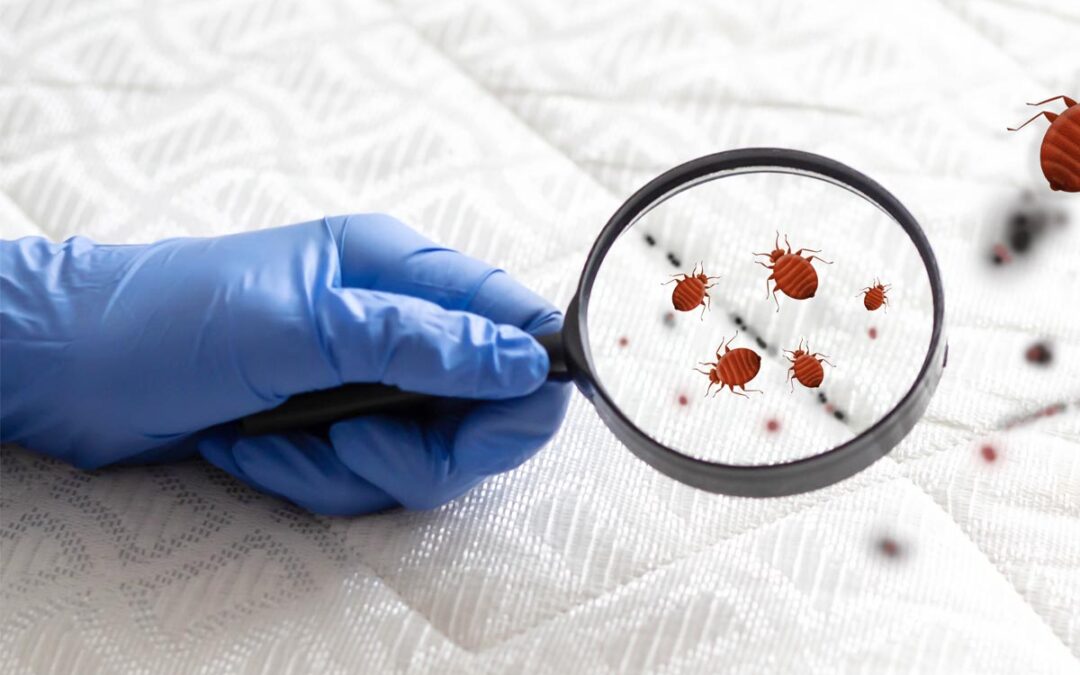Bed bugs in Collingwood are becoming more common due to increased travel, second-hand furniture, and dense housing. These pests can hide in tiny cracks and crevices, making them difficult to detect until the infestation spreads. The warmth and carbon dioxide we emit while sleeping attract them, making beds, couches, and upholstered furniture their preferred hiding spots. Even the cleanest homes can be affected, so early action is key to preventing a serious problem.
Why Bed Bugs Are a Growing Concern
Bed bugs have seen a steady resurgence across Canada and around the world. This rise is linked to several factors, including increased international travel, the popularity of used furniture, and a reduction in widespread pesticide use. People unknowingly bring them home from hotels, public transport, or secondhand purchases. Once inside, bed bugs multiply quickly, turning a minor problem into a difficult and costly one if left untreated.
What makes bed bugs more troubling is their resistance to many over-the-counter insecticides. Older chemical treatments that once worked are no longer as effective, making them harder to eliminate without professional help. Bed bugs also adapt easily, hiding in tiny cracks, baseboards, and even behind wallpaper. They can go weeks without feeding, which allows them to stay hidden until the infestation grows large enough to be noticed.
Unlike other household pests drawn to food waste or dirty kitchens, bed bugs are attracted directly to humans. They sense our body heat and carbon dioxide as we sleep, feeding mainly at night. Cleanliness does not protect a home from infestation, which means anyone can be affected. Understanding what draws them in—and addressing it early—can prevent major infestations and reduce the need for intensive treatments later on.

10 Things That Attract Bed Bugs to Your Home
Bed bugs are drawn to specific conditions that make it easier for them to feed and hide. Knowing what attracts them can help you lower the risk of an infestation.
- Used Furniture and Mattresses
Second-hand furniture is one of the most common ways bed bugs enter a home. Even a clean-looking couch or mattress can be infested with bugs or eggs hidden deep in the seams or wood. Bed bugs often stay dormant until they sense a warm body nearby. They can live in furniture for months without feeding.
Pest control technicians are trained to inspect used furniture and identify signs of bed bugs. They use targeted treatments that reach deep into materials where bed bugs hide.
- Frequent Travel
People who travel often are at a higher risk of bringing bed bugs home. These insects hide in hotel mattresses, luggage racks, and upholstery, then hitch a ride in suitcases or backpacks. Even luxury accommodations are not immune to infestations. Once home, the bugs spread quickly to beds, couches, and clothing.
A pest control expert can check your home after travel, especially if you notice bites or small stains on bedding. Early intervention helps stop a small problem from becoming a major infestation.
- High Humidity and Warm Temperatures
Bed bugs thrive in warm, humid environments. They prefer temperatures between 21°C and 30°C and tend to hide near areas where people sleep. Warm rooms help them reproduce faster and stay active. They don’t do well in cold spaces, which is why they avoid basements or unheated areas.
Pest control services can include environmental monitoring and humidity control advice. Professionals may also recommend ways to reduce warmth around beds and furniture where bugs are most likely to gather.
- Clutter and Storage Areas
Clutter gives bed bugs more places to hide. Piles of clothes, boxes, books, and other items create dark spaces where bugs can remain hidden for weeks. These areas are hard to inspect and clean, allowing infestations to grow unnoticed. Bedrooms with lots of furniture or stacked items are especially vulnerable.
Pest control professionals will check cluttered zones and offer guidance on reducing hiding spots. They also treat hard-to-reach areas using special equipment that penetrates cracks and corners.
- Dirty Laundry
Worn clothes carry human scents that attract bed bugs. Research shows that bed bugs prefer soiled laundry over clean clothes because of body oils and sweat. When laundry is left on the floor or in open baskets, it becomes a perfect hiding spot. The bugs burrow into folds and seams, waiting for the next feeding opportunity.
Pest control services will treat laundry zones and offer tips on how to store worn clothes in sealed bags or containers. Heat-based treatments are also used to kill bugs inside fabrics without damaging them.
- Multiple Sleeping Areas
Homes with many sleeping spots increase the risk of spreading an infestation. Bed bugs feed at night and will move between rooms if multiple people are present. Guest rooms, children’s bedrooms, and even recliners in the living room can host these pests. If one bed is infested, others may follow within days.
Pest control professionals inspect all sleeping areas, not just the obvious ones. They create a treatment plan that covers each room, preventing the bugs from shifting between spaces.
- Shared Walls in Apartment Buildings
Apartments and condos are more likely to experience cross-contamination. Bed bugs can crawl through tiny gaps in electrical outlets, plumbing holes, and wall cracks to reach other units. If one tenant has bed bugs, nearby neighbours are at risk. In some cases, infestations spread across entire floors.
Pest control experts work with building management to inspect and treat multiple units. They seal entry points and use coordinated treatments to contain the infestation.
- Public Spaces and Waiting Areas
Places like buses, theatres, and waiting rooms can expose people to bed bugs. The bugs hide in upholstered seats and cling to clothing or bags. You may not notice them at first, but they can follow you home and settle into your furniture. High-traffic public spaces are becoming more common sources of bed bug exposure.
A pest control technician will identify when exposure likely occurred in a public place and track how the bugs entered the home. They use a step-by-step process to eliminate bugs from furniture, fabrics, and storage areas.
- Second-Hand Clothing or Bedding
Thrift stores, garage sales, and donation centres may unknowingly sell items with bed bugs. The insects can hide in stitching, folds, and tags. Even if clothes look clean, they could still carry live bugs or eggs. Washing them in cold water is not enough to kill them.
Pest control experts can identify whether second-hand items are the source of an infestation. They may recommend heat treatment, deep cleaning, or safe disposal based on the condition of the items.
- Lack of Routine Inspection
Most people don’t notice bed bugs until there’s a major infestation. Small signs—like itchy bites, dark spots on sheets, or a musty smell—are often ignored. The bugs can multiply quickly during this time. By the time you find them, they may already be in multiple rooms.
Pest control teams provide inspections that catch bed bugs early. They use tools like canine scent detection, traps, and detailed checks of baseboards and mattress seams to find hidden bugs.
How Pest Control Effectively Eliminates Bed Bugs
Getting rid of bed bugs requires more than just sprays or home remedies. Professional pest control uses targeted treatments that kill bugs at every stage and stop them from spreading.
- Thorough Inspections – Pest control professionals start by examining common hiding spots like mattress seams, wall outlets, and baseboards. This detailed check helps identify the full extent of the infestation before any treatment begins.
- Heat Treatments – Specialized equipment heats entire rooms to a lethal temperature for bed bugs, typically above 50°C. The high heat penetrates furniture, walls, and flooring, killing bugs and eggs in hidden areas without chemicals.
- Insecticide Applications – Technicians use government-approved insecticides targeting adult bugs and their developing eggs. These products are applied in narrow cracks and travel paths where bed bugs are most active.
- Steam Treatments – Hot steam effectively kills bed bugs on contact, especially in fabrics and delicate furniture. This chemical-free method works well for areas where insecticides can’t be used.
- Vacuuming and Encasing – Industrial vacuums remove live bugs, eggs, and droppings from infested surfaces. Mattress encasements trap any remaining insects, cutting them off from food sources and preventing escape.
- Follow-Up Visits – Bed bugs can be persistent, so pest control companies often schedule return visits. These visits help confirm that the infestation is fully resolved and allow for touch-up treatments if needed.
- Integrated Pest Management (IPM) – IPM combines several treatment methods tailored to the infestation level and environment. This approach improves long-term success by focusing on both elimination and prevention.
What to Expect from a Pest Control Visit
During the first visit, a technician will inspect your home thoroughly. They check mattresses, furniture, walls, carpets, and electrical outlets for signs of bed bugs. Once the infestation is confirmed, they’ll design a custom treatment plan based on the level of severity.
You may be asked to prepare your home by removing clutter or laundering items. After the treatment, follow-up visits may be scheduled to ensure the bugs are gone for good. The technician may also offer advice on preventing future infestations.

Act Now—Mr. Pest Control Offers Trusted Bed Bugs Control in Collingwood
If you’ve seen signs of bed bugs or think your home may be at risk, don’t wait. The longer they stay, the harder they are to eliminate. Mr. Pest Control offers trusted, thorough bed bugs control in Collingwood that stops infestations at the source. Our team uses safe, effective methods that eliminate bugs completely and keep them from coming back.
Call us today at (705) 739-7378 to schedule your inspection and sleep without worry tomorrow. Your comfort is our top priority.



